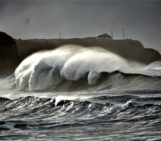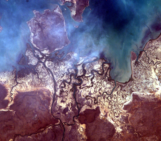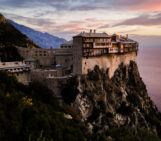
Space weather is a ubiquitous, but little known, natural hazard. Though not as tangible as a volcanic eruption, storm or tsunami wave, space weather has the potenital to cause huge economic losses across the globe. In Europe alone, the interaction of solar wind with our planet’s magnetosphere, ionosphere and thermosphere, could lead to disrutions to space-based telecommunications, broadcasting, weather services and navigation, as well as distributions of power and terrestrial communications.
The Sun’s magnetic field drives all solar activity, from coronal mass ejections (CMEs), to high-speed solar wind, and solar energetic particles. While not all solar activity impacts the Earth, when it does, it can cause a geomagnetic storm. The Earth’s magnetic field creates, the magnetosphere which protects us from most of the particles the Sun emits. But when a “CME or high-speed stream arrives at Earth it buffets the magnetosphere. If the arriving solar magnetic field is directed southward it interacts strongly with the oppositely oriented magnetic field of the Earth. The Earth’s magnetic field is then peeled open like an onion, allowing energetic solar wind particles to stream down the field lines to hit the atmosphere over the poles,” explains NASA.
Aurorae are the most visible effect of the sun’s activity on the Earth’s atmosphere. They usually occur 80 to 300 km above the Earth’s surface, but can extend laterally for thousands of kilometers. They most commonly occur at the Earth’s poles, meaning only those at very northern, or southern, latitudes get the chance to see them (at least regularly). However, they are a reminder of the Sun’snpower and the threat posed by space weather.
To bring aurora to those who haven’t seen them before, and raise awarness about space weather at the same time, Jean Lilensten, director of research at l’Institut de planétologie et d’astrophysique de Grenoble (IPAG) in France, created the Planeterrella; an experiment which includes two spheres, one acting as the Earth and the other acting as the Sun. It allows for auroral displays, and demonstrations of other phenomena which ocurr in the space environment, to be brought into classrooms and public outreach events.
Today’s featured image shows the Planeterrella and several space phenomena. The violet colors on the big sphere ( the “star” ) are due to N2+ (a nitrogen cation), while the redish light on the little one is due to nitrogen. Both colours are seen in actual aurorae on Earth. The red “bow” in the middle, between the two spheres, is a bow shock similar to the magnetopause between Earth and the Sun (of course not to scale). Finally, a direct magnetic reconnection between the two spheres can be seen at the bottom.
Reposted from an original post by Laura Roberts.
Imaggeo is the EGU’s online open access geosciences image repository. All geoscientists (and others) can submit their photographs and videos to this repository and, since it is open access, these images can be used for free by scientists for their presentations or publications, by educators and the general public, and some images can even be used freely for commercial purposes. Photographers also retain full rights of use, as Imaggeo images are licensed and distributed by the EGU under a Creative Commons licence. Submit your photos at http://imaggeo.egu.eu/upload/.




